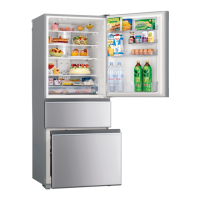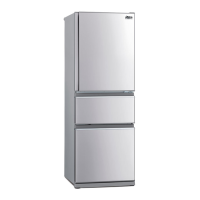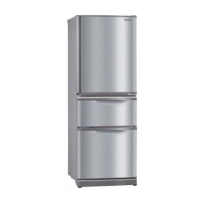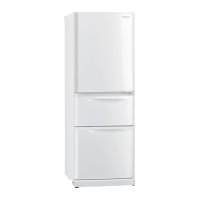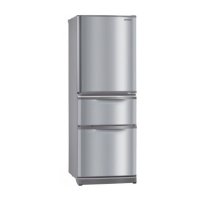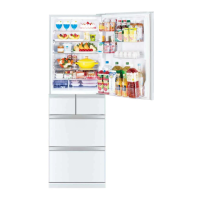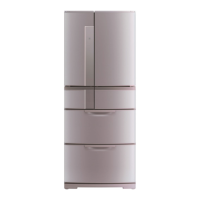Contents
Page
2-3
4-5
6-8
9
10-11
12-13
14
15-16
16-18
19
For your safety, please be sure to follow
these instructions
From installing to running your refrigerator
Using each compartment
How to adjust the temperature
Automatic Ice-Maker
How to remove and clean accessories
How to maintain your automatic ice-maker
What to do in these situations
Troubleshooting
Accessories
Refrigerator
/
Sliding case
/
Vegetable and Freezer Compartments
Before useOperationCleaning
When in trouble
SERIES MODEL
MR-CX450ER
MR-CGX450ER
Refrigerator-Freezer
OPERATING INSTRUCTIONS
Fire/Flammable refrigerant
Maintenance work shall only be carried out at workshop by well-trained maintenance worker.
Please read this manual carefully and follow the information contained within. In particular, be sure to read the safety precautions before using this refrigerator.
Be sure to receive your copy of the warranty from the retailer and confirm that the purchase date and retailer name are written on the warranty.
Store this operating instructions manual and the warranty in a safe place.
This refrigerator was manufactured for refrigerating and freezing of foods in general households. For commercial use, please use a commercial refrigerator-freezer.
The principal plastic components indicate the material name to facilitate recycling.
Do not store explosive substances such as aerosol cans with a flammable propellant in this appliance.
This appliance is intended to be used in household application only.
WARNING - When positioning the appliance, ensure the supply cord is not trapped or damaged.
WARNING - Do not locate multiple portable socket-outlets or portable power supplies at the rear of the appliance.
WARNING - Just in case of having damaged the refrigerant circuit, do not use electric items or fire equipments near by, and open the window to ventilate
the room. And contact the retail store at which you purchased it or the following MITSUBISHI SERVICE CENTRE.
WARNING - Do not use mechanical devices or other means to accelerate the defrosting process, other than those recommended by the manufacturer.
WARNING - Keep ventilation openings, in the appliance enclosure or in the built-in structure, clear of obstruction.
The user manual should be handed over to any person who would use or handle the refrigerator whenever the refrigerator would be transferred to another
location and delivered to a recycling plant.
This refrigerator uses flammable foaming gas for insulation. Please deliver the unit to specialized industrial waste dealer when you do away it.
Please follow the rules in your country.
R600a Refrigerant Warning
This appliance contains a small quantity of R600a refrigerant which is flammable.
During transportation and installation, ensure that the tubing of the refrigerant circuit is not damaged.
Leaking refrigerant can ignite and may damage the eyes.
In the event any damage does occur, avoid exposure to open fires and any device which creates a spark. Disconnect the appliance from the mains power.
Thoroughly ventilate the room in which the appliance is located for several minutes.
The room for installing the appliance must be at least 1 cubic metre per 8 grams of refrigerant.
The refrigerant quantity contained in this appliance is noted on the Rating Label of the appliance.
●
●
●
●
●
●
It is strongly recommended to use only lukewarm water
and a soft cloth when cleaning. Cleaning agents can cause
cracking to the plastic components of your refrigerator.
Cleaning Instruction - Important!
